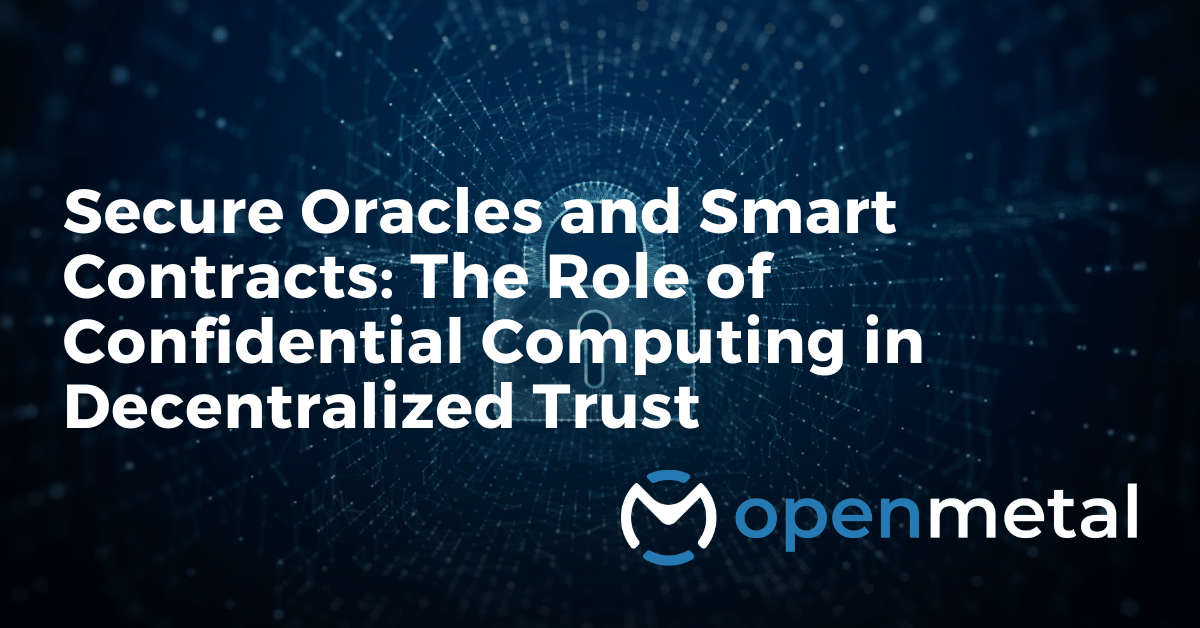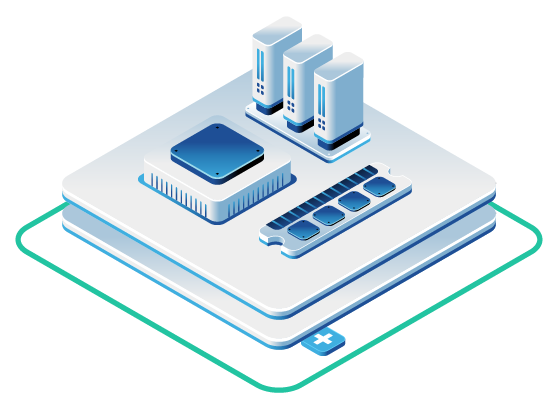
When you’re building decentralized applications that handle financial data or compliance-sensitive information, the security of your oracles and smart contracts becomes paramount. The challenge isn’t just about writing bug-free code—it’s about ensuring that the entire execution environment, from data feeds to contract logic, remains protected from tampering and observation.
This is where confidential computing enters the picture, offering hardware-based security guarantees that traditional blockchain infrastructure can’t provide alone.
Understanding the Oracle Problem in Blockchain Security
Blockchain networks excel at maintaining consensus about on-chain data, but they’re inherently isolated from the outside world. Smart contracts need external data—price feeds, weather information, regulatory updates—to function in real-world applications. This dependency creates what’s known as the “oracle problem.”
Oracles act as bridges between blockchains and external systems, but they also introduce potential vulnerabilities:
- Data manipulation risks: If an oracle’s data source gets compromised, smart contracts receive false information
- Trust assumptions: Traditional oracles require trusting the data provider, contradicting blockchain’s trustless nature
- Privacy concerns: Oracle operators can see sensitive data passing through their systems
- Single points of failure: Centralized oracles can become attack vectors for entire DeFi protocols
How Confidential Computing Transforms Oracle Security
Confidential computing uses hardware-based Trusted Execution Environments (TEEs) to create isolated, encrypted spaces where code and data remain protected during processing. For blockchain infrastructure, this technology offers unique advantages that address fundamental oracle and smart contract vulnerabilities.
OpenMetal’s confidential computing infrastructure provides TEE-enabled bare metal servers that support Intel SGX and AMD SEV technologies. These hardware features create secure enclaves where oracle nodes can:
- Process data without exposing it to the host operating system
- Generate cryptographic proofs of correct execution
- Maintain data confidentiality even from infrastructure operators
Key Components of a Confidential Oracle Architecture
When you deploy oracle nodes on OpenMetal’s bare metal infrastructure, you gain access to hardware-level security primitives that traditional cloud providers can’t match. Here’s how the architecture works:
- Secure Data Ingestion
- External data sources connect to oracle nodes running in TEEs
- All data remains encrypted in memory during processing
- Network connections use attestation to verify enclave integrity
- Isolated Computation
- Oracle logic executes within hardware-protected enclaves
- Memory encryption prevents host-level inspection
- CPU instructions enforce access control boundaries
- Verifiable Outputs
- TEEs generate attestation reports proving correct execution
- Smart contracts can verify these proofs on-chain
- Results include cryptographic signatures tied to specific enclave measurements
Implementing Secure Smart Contracts with Confidential Computing
Beyond oracles, confidential computing also protects smart contract execution itself. While blockchains provide transparency by default, many use cases require privacy—think sealed-bid auctions, private voting, or confidential financial settlements.
The Ethereum Foundation emphasizes that smart contract security goes beyond code audits. You need to consider the entire execution environment, including:
- State privacy: Keeping contract state hidden from unauthorized parties
- Computation privacy: Ensuring intermediate calculations remain confidential
- Access control: Restricting who can invoke specific contract functions
- Regulatory compliance: Meeting data residency and privacy requirements
Deployment Architecture on OpenMetal
When you’re ready to deploy confidential smart contracts, OpenMetal’s infrastructure deployment guide walks through the process step-by-step. The typical architecture includes:
Hardware Layer
- Bare metal servers with Intel TDX or AMD SEV-SNP support
- Hardware security modules (HSMs) for key management
- High-performance NVMe storage with encryption at rest
Software Stack
- Confidential VM or container runtime
- Blockchain node software configured for TEE operation
- Oracle middleware with enclave support
- Monitoring and attestation services
Network Configuration
- Isolated VLANs for oracle traffic
- Encrypted communication channels between enclaves
- Load balancers with SSL/TLS termination outside the trust boundary
Real-World Applications and Use Cases
The combination of confidential computing and blockchain technology opens new possibilities for decentralized applications that were previously impractical:
DeFi Price Oracles
Traditional price oracles expose trading strategies and can be front-run. With confidential computing:
- Price aggregation happens inside secure enclaves
- Individual data sources remain hidden from operators
- Time-weighted averages calculate without revealing intermediate values
Private Lending Protocols
Lending platforms need credit scores and financial data without exposing user information:
- Credit data processes within TEEs
- Smart contracts receive only necessary decision outputs
- Audit trails maintain regulatory compliance without sacrificing privacy
Cross-Chain Bridges
Bridge operators traditionally see all assets flowing between chains. Confidential bridges:
- Process transfers inside secure enclaves
- Hide transaction details from bridge operators
- Generate proofs of correct operation for both chains
Regulatory Compliance Oracles
Financial applications must verify compliance without exposing sensitive data:
- KYC/AML checks run in isolated environments
- Smart contracts receive only pass/fail attestations
- Personal data never touches the blockchain
Performance Considerations for Production Deployments
Running oracles and smart contracts in confidential computing environments does introduce some overhead. You should plan for:
Latency Impact
- Enclave transitions add 10-50 microseconds per call
- Attestation verification takes 100-500 milliseconds
- Network encryption adds minimal overhead with hardware acceleration
Throughput Optimization
- Batch oracle updates to amortize enclave switching costs
- Use persistent enclaves for frequently accessed data
- Implement caching layers outside the trust boundary for public data
Resource Planning
- Reserve 10-20% additional CPU for encryption overhead
- Allocate extra memory for enclave page caches
- Plan network capacity for attestation traffic
Integration with Existing Blockchain Infrastructure
Modular blockchain architectures particularly benefit from confidential computing because they already separate concerns between layers. You can integrate confidential oracles and smart contracts by:
Ethereum-Compatible Chains
- Deploy oracle nodes as standard JSON-RPC providers
- Use precompiled contracts for attestation verification
- Implement EIP-712 for structured data signing
Cosmos SDK Chains
- Create custom modules for confidential computation
- Use IBC for cross-chain oracle data
- Implement CosmWasm contracts with TEE support
Substrate-Based Chains
- Build pallets that interface with off-chain workers
- Use OCW for oracle data submission
- Implement runtime verification of attestations
Security Best Practices
Intel’s research on confidential computing for blockchain highlights several security considerations you should address:
Attestation Verification
- Always verify enclave measurements before trusting outputs
- Implement certificate chains for attestation services
- Monitor for revoked CPU keys or known vulnerabilities
Key Management
- Generate keys inside enclaves when possible
- Use hardware security modules for long-term key storage
- Implement key rotation policies for oracle signing keys
Side-Channel Protections
- Enable speculative execution mitigations
- Implement constant-time cryptographic operations
- Monitor for unusual access patterns or timing variations
Network Security
- Use mutual TLS between oracle nodes and data sources
- Implement rate limiting to prevent DoS attacks
- Deploy intrusion detection systems outside the trust boundary
Choosing the Right Infrastructure Partner
When evaluating infrastructure providers for confidential blockchain deployments, consider these factors:
Hardware Capabilities
- Latest generation CPUs with mature TEE support
- ECC memory for additional reliability
- Hardware security modules for root of trust
Storage Architecture
- Distributed storage for high availability
- Encryption at rest with customer-managed keys
- Snapshot capabilities for disaster recovery
Network Features
- Multiple tier-1 transit providers
- DDoS protection at the edge
- Private interconnects to major clouds
Support and Expertise
- 24/7 technical support familiar with blockchain workloads
- Professional services for architecture design
- Compliance certifications for regulated industries
Future Developments in Confidential Blockchain Technology
The intersection of confidential computing and blockchain continues to evolve rapidly. Upcoming developments include:
Hardware Advancements
- Multi-party computation in hardware
- Fully homomorphic encryption acceleration
- Quantum-resistant cryptographic primitives
Software Innovations
- Standardized APIs for cross-platform TEE development
- Improved tooling for debugging confidential applications
- Native blockchain integration in major protocols
Ecosystem Growth
- More oracle providers offering confidential options
- Standard libraries for common confidential operations
- Regulatory frameworks recognizing hardware-based attestation
Getting Started with Confidential Oracles
Ready to implement secure oracles and smart contracts for your blockchain application? Here’s your roadmap:
- Assess Your Requirements
- Identify which data needs confidentiality
- Determine performance requirements
- Understand regulatory constraints
- Design Your Architecture
- Choose between confidential VMs or process-based enclaves
- Plan your attestation strategy
- Design key management procedures
- Select Infrastructure
- Evaluate hardware capabilities
- Compare pricing models
- Test network connectivity to your users
- Implement and Test
- Start with a proof of concept
- Conduct security audits
- Perform load testing in production-like environments
- Deploy and Monitor
- Use staged rollouts for risk management
- Implement comprehensive monitoring
- Plan for disaster recovery scenarios
The Path Forward
Confidential computing represents a fundamental shift in how we approach blockchain security. By moving trust from software to hardware, you can build oracles and smart contracts that maintain blockchain’s transparency benefits while adding strong privacy guarantees.
The technology exists today—OpenMetal’s confidential computing platform provides the bare metal infrastructure needed to run these workloads at scale. Whether you’re building a new DeFi protocol, upgrading existing oracle infrastructure, or exploring private smart contracts, confidential computing offers the security foundation your users demand.
As blockchain applications handle increasingly sensitive data and higher-value transactions, the combination of decentralized consensus and hardware-based security becomes not just advantageous—it becomes necessary for the next generation of Web3 infrastructure.
Read More on the OpenMetal Blog


































